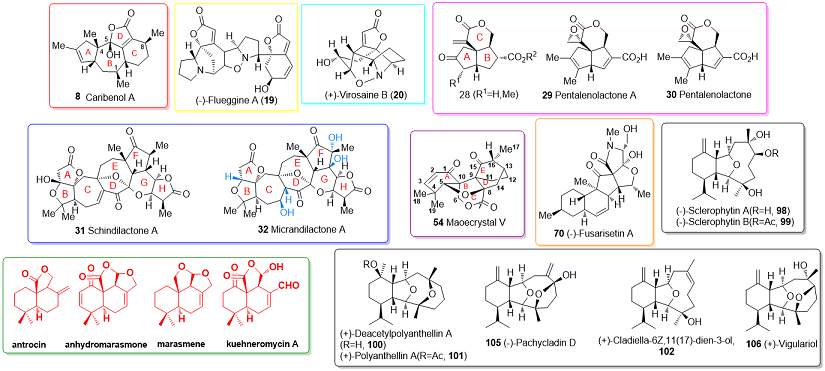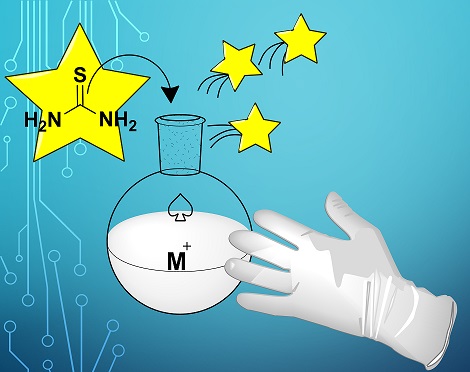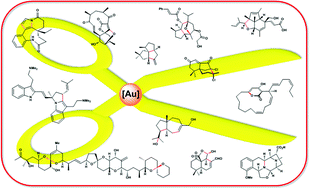Publications
82.Efficient Total Synthesis of Bioactive Natural Products: A Personal Record
Yun Zhang, Jianxian Gong,* and Zhen Yang*
In this account, we have highlighted our most recent works towards the total synthesis of bioactive natural products, which have resulted in the development of several novel synthetic methods. Inspired and guided by strategies based on diversity-oriented synthesis, we have successfully applied the novel synthetic methodologies developed in our lab to the total synthesis of a diverse collection of structurally challenging targets. We have also documented the evolution of these synthetic strategies. The total syntheses described in this account have been organized from the perspective of different molecules whilst still alluding to the parallel synthetic strategies involved.

81.Thioureas as Ligands in Organometallic Reactions
Jingjie Li, Li-Li Shi, Jiahua Chen, Jianxian Gong, Zhen Yang*
Thioureas are air and moisture stable, and they can coordinate to various metal centers, making their derivatives versatile ligands for transition-metal-catalyzed reactions. This account provides an overview of recent developments in the use of thioureas as ligands in organometallic-catalyzed reactions, with particular emphasis on their application to the total synthesis of natural products.

80.Strategic innovation in the total synthesis of complex natural products using gold catalysis
Yun Zhang, Tuoping Luo* and Zhen Yang*
Nat. Prod. Rep., 2014, 31, 489
Novel organic reactions drive the advance of chemical synthesis in the same way that enabling technologies drive new scientific discoveries. One area of organic methodology that has undergone significant growth during the last decade is that of homogeneous gold-catalyzed transformations. This trend has been further enhanced by the employment of gold catalysis on a routine basis to accomplish the total synthesis of natural products. In particular, the superior π acidity of the cationic gold complex for the activation of alkynes and allenes towards nucleophilic addition has significantly enriched the toolkit of transformations available to the total synthesis community, and inspired a new era of creativity in terms of the strategic disconnection of target compounds during their retrosynthetic analysis. Instead of simply supplementing the many existing reviews of gold catalysis, this review has been organized from the perspective of synthetic target families, with particular emphasis on the use of gold-catalyzed transformations during the late stages of syntheses involving complicated substrates, and cascade reactions that significantly increase molecular complexity.

79.Collective Synthesis of Cladiellins Based on the Gold-Catalyzed Cascade Reaction of 1,7-Diynes
Guozong Yue, Yun Zhang, Lichao Fang, Chuang-chuang Li, Tuoping Luo,* and Zhen Yang*
Angew. Chem. Int. Ed. 2014, 53, 1837
The cladiellin family of natural products, which includes molecules with various biological activities, continues to invite new synthetic studies. A gold-catalyzed tandem reaction of 1,7-diynes to construct the 6-5-bicyclic ring systems that are present in a number of natural products was developed. This reaction was applied as the key step to realize the formal and total syntheses of nine members of the cladiellin family in an enantio- and diastereoselective manner. This modular and efficient approach could also be used for the construction of other cladiellins, as well as their analogues, for follow-up studies.

78.Development of an expedient intramolecular Pauson–Khand reaction approach to stereoselectively construct the trans-decalin with a C1 quaternary chiral center
Li-Li Shi, Hong-Juan Shen, Li-Chao Fang, Jun Huang, Chuang-Chuang Li * and Zhen Yang *
Stereoselective synthesis of the trans-decalin subunit with a defined C1 quaternary chiral center has been achieved by the Pauson–Khand reaction (PKR) as a key step. The developed chemistry offers an alternative to the IMDA reaction that has been used for the syntheses of trans-decalin based biologically active natural products.






